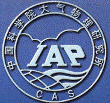
Advanced Analytical Methods for Climate Research
Case study 1: Tropical cyclones in the North-West Pacific

 |
Advanced Analytical Methods for Climate Research
|
 |
| This figure shows numbers of tropical storms in the North-West Pacific Ocean, for each year between 1959 and 2000. `Tropical storms' are classified as events with a maximum windspeed above 34 knots; `typhoons' as events with a maximum windspeed over 64 knots; and `intense typhoons' as events with a maximum windspeed over 97 knots. The intense typhoon record starts in 1972, because the Dvorak technique for assessing maximum windspeeds was not available before this. |
| It is well known that the state of El Niño is related to tropical storm activity in the North-West Pacific the following year. This can be seen in the figure below. Here, the number of typhoons in the North-West Pacific in each year is plotted against the Niño 3 anomaly for each month of the preceding year. On the basis of a naive correlation analysis, it appears that significant relationships exist for all months between June and December. These relationships, together with others that are not considered here, can be used in seasonal forecasting models - see http://forecast.mssl.ucl.ac.uk/ for examples. |
R program to perform some analyses of these data. For
details of how to obtain R, see the links page.
nstorms.dat,
containing annual storm numbers.
nino3.dat,
containing monthly Niño 3 data from 1856-2000.
TC_anal.r,
containing R code.